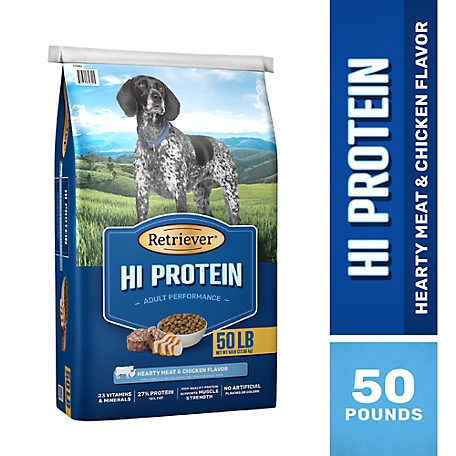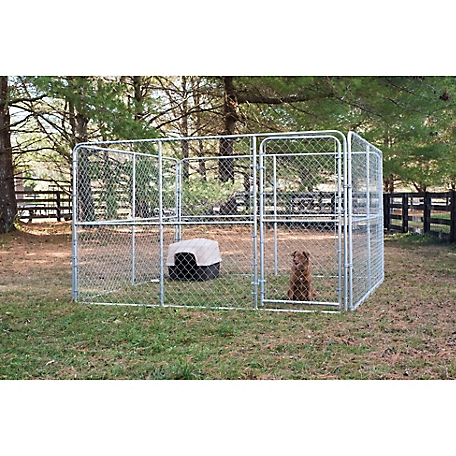Retriever All Life Stages Hi Protein Chicken and Beef Recipe Dry Dog Food
Retriever All Life Stages Hi Protein Dog Food is a special dog formula designed to meet the nutritional needs of highly active dogs. By containing 27% protein and 15% fat this recipe has the perfect balance of substance needed to support strong bones and lean conditioning.
Strength & Endurance for Your Dog
Retriever All Life Stages Hi Protein Dog Food is a special dog formula designed to meet the nutritional needs of highly active dogs. By containing 27% protein and 15% fat this recipe has the perfect balance of substance needed to support strong bones and lean conditioning.
Nutrition for Highly Active Dogs
Whether it’s because they are training or working, your dog needs something special in their diet. This dry formula uses hearty meat and bone meal to support the strength and stamina that an active dog needs to maintain a healthy lifestyle.
Made by True Animal Lovers
We bring our deep passion for land and animals to the forefront of our products and services. By sourcing high quality meats and the best local produce, utilizing superior water purification processes and thoroughly testing our formulas, we guarantee excellent quality food for your pets.
About This Formula
Retriever All Life Stages Hi Protein Dog Food is a dry dog formula developed specifically to meet the nutritional needs of highly active and outdoor dogs. By using meat and bone meal as top ingredients, this recipe offers a high-quality source of protein that aids the body to heal tissue, grow hair and maintain a smooth skin and coat.
Additional information
| Country of Origin | Made in USA |
|---|---|
| Breed Size | Extra Small, Small, Medium, Large, Extra Large |
| Flavor | Beef |
| Health Features | Muscle Health, Bone Health, Oral Health, Skin & Coat Health |
| Life Stage | All Life Stages |
| Primary Flavor | Beef |
| Special Diets | High Protein, None, Omega Fatty Acids |
| Manufacturer Part Number | 10325650 |











by Tracy
My dogs coats have improved. They eat less and no stomach upset.
by Morrison
All my dogs love this!
by Fultonator
Good for working dogs.
by Rocky
Dogs love it with the high protein it keeps their coat glowing.
by Landon
Low price, no fillers dogs love it, have working dogs on aranch